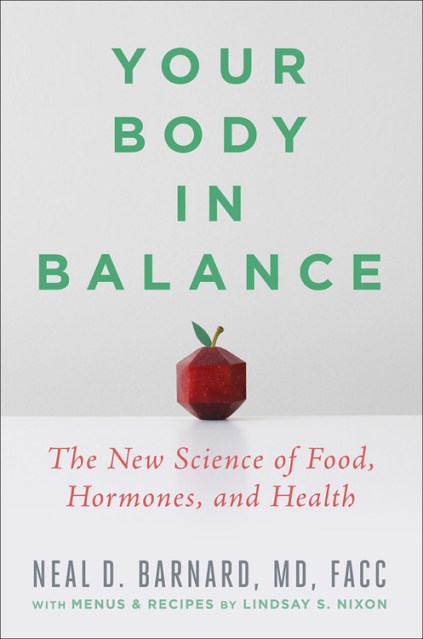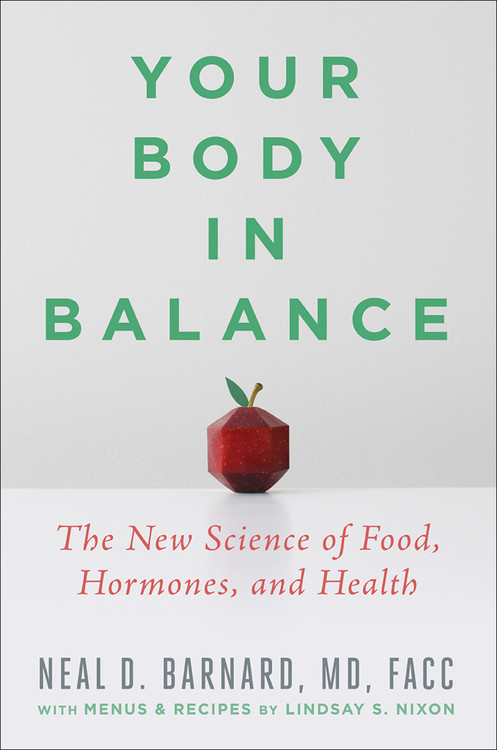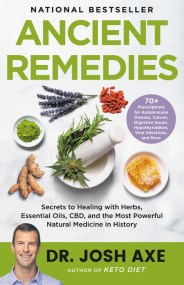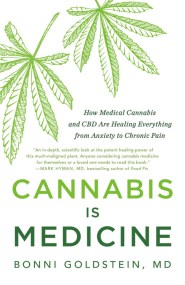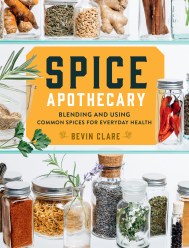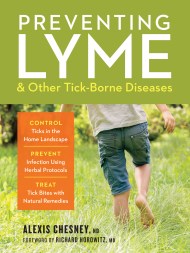Promotion
Use code MOM24 for 20% off site wide + free shipping over $45
Your Body in Balance
The New Science of Food, Hormones, and Health
Contributors
By Neal D Barnard, MD, MD, FACC
Contributions by Lindsay Nixon
Formats and Prices
Price
$29.00Price
$37.00 CADFormat
Format:
- Hardcover $29.00 $37.00 CAD
- ebook $12.99 $16.99 CAD
- Audiobook Download (Unabridged)
- Trade Paperback $19.99 $25.99 CAD
This item is a preorder. Your payment method will be charged immediately, and the product is expected to ship on or around February 4, 2020. This date is subject to change due to shipping delays beyond our control.
Also available from:
Hidden in everyday foods are the causes of a surprising range of health problems: infertility, menstrual cramps, weight gain, hair loss, breast and prostate cancer, hot flashes, and much more. All of these conditions have one thing in common: they are fueled by hormones that are hiding in foods or are influenced by the foods we eat.
Your Body in Balance provides step-by-step guidance for understanding what's at the root of your suffering-and what you can do to feel better fast. Few people realize that a simple food prescription can help you tackle all these and more by gently restoring your hormone balance, with benefits rivaling medications. Neal Barnard, MD, a leading authority on nutrition and health, offers insight into how dietary changes can alleviate years of stress, pain, and illness. What's more, he also provides delicious and easy-to-make hormone-balancing recipes, including:
- Cauliflower Buffalo Chowder
- Kung Pao Lettuce Wraps
- Butternut Breakfast Tacos
- Mediterranean Croquettes
- Apple Pie Nachos
- Brownie Batter Hummus
Genre:
-
Praise for Your Body in Balance:KristiFunk, MD, FACS, breast cancer surgeon, co-founder of Pink Lotus BreastCenter, and bestselling author of Breasts: The Owner's Manual
"In Your Body in Balance, Dr. Neal Barnard distills the latest nutritional science down to bite-sized truths that will quickly transform nearly any life plagued by hormone dependent illness into one of vibrant wellness. Whether it's cramps, cancer, infertility, impotence, moodiness or menopause, Dr. Barnard masterfully navigates a clear path to your healthiest self." -
"Dr. Neal Barnard is one of the most important authorities of our time on nutrition, diet, and health, and Your Body in Balance is the book that can and will finally change your health for good. Dr. Barnard walks us through the most common and troublesome ailments which so many of us struggle with: hormone fluctuations, thyroid conditions, chronic and terminal illness, and mood disorders-with an eye towards research and solutions based in foods commonly available to us. We have the power to heal our bodies with the foods we eat, and Your Body in Balance is the resource with the wisdom to get us there. With recipes included, this may just be the only book you need on your shelf in order to change your body, your health, and your life."Mayim Bialik, PhD, neuroscientist and actor
-
"Finally, an intelligent guide book that speaks up about the potent role our hormones play in every aspect of our lives. As an Olympic athlete, I never really thought of this connection until I dropped all animal foods from my diet and turned to whole plant foods to fuel my training. Almost overnight, my adaptation to training sped up (which is a function of our immune system directed by hormones), my PMS subsided, my breakouts cleared up, and my ability to focus and calm my nerves greatly improved. Dr. Barnard takes the reader on a revealing journey to uncover what's really behind some of our most common physical ailments and how to fix them in the blink of an eye."Dotsie Bausch, Olympic silver medalist, 8X U.S. National Champion, former worldrecord holder, 2x Pan American Gold, and founder of Switch4Good
-
"Your Body in Balance is an incredible resource. If you have ever wondered how the food you eat impacts your fertility, erectile function, thyroid function, skin, hair, and so much more, wonder no longer. This book shows us how the food we eat can literally change our hormones, our mood, and our health! Happy eating!"Robert Ostfeld, MD, MSc, FACC, director ofPreventive Cardiology at Montefiore Health System in New York
- On Sale
- Feb 4, 2020
- Page Count
- 352 pages
- Publisher
- Balance
- ISBN-13
- 9781538747421
Newsletter Signup
By clicking ‘Sign Up,’ I acknowledge that I have read and agree to Hachette Book Group’s Privacy Policy and Terms of Use
